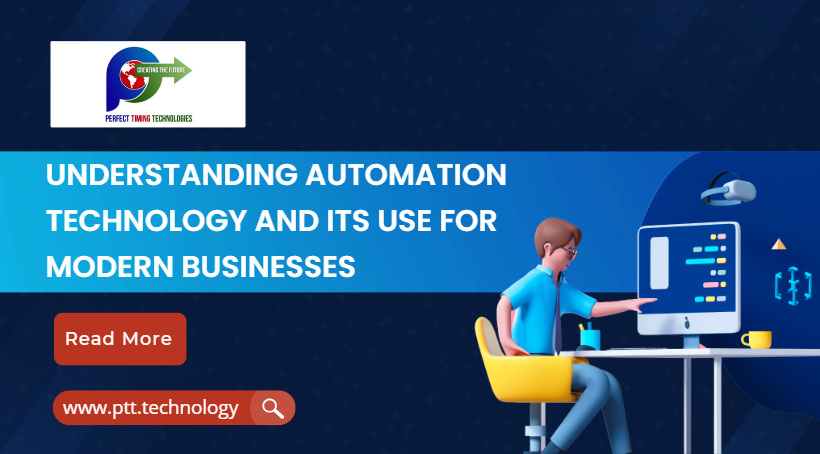
Automation in simple terms is the application of machines to tasks once accomplished manually. Automation has brought a revolution in the digital world with more and more organizations adopting automation technology to their day-to-day business operations.
The automation technology is widely used by various businesses involving the use of computers and other computer-based technologies. Business operations are easily carried out without human intervention and errors. Due to this, the automated systems have become much more sophisticated and complex at the same time.
What is Automation Technology?
Automation technology refers to machines, software, and other technologies used to automate tasks and processes previously performed manually by humans. The goal of automation technology is to improve efficiency, accuracy, and speed while reducing the costs associated with labor and human error.
Different automation technologies include robotics, artificial intelligence, machine learning, computer vision, and process automation software. These technologies automate tasks in various industries, such as manufacturing, logistics, healthcare, finance, and more.
Some common examples of automation technology include automated assembly lines in manufacturing plants, chatbots used for customer service, and automated financial trading algorithms used in the stock market.
Different Types of Automation
Automation is not just confined to any one field of the business industry. It is applied to different industrial fields along with the corporate sector.
Given below are some common types of automation-
- Fixed Automation gets used in the high-volume production of standardized products. The machines and equipment perform a specific set of tasks repetitively without much flexibility. Examples of fixed automation include assembly lines, conveyor belts, and robotic arms.
- Programmable Automation is used for the low-volume production of customized products. The machines and equipment are programmed to perform different tasks depending on the product manufactured. Examples of programmable automation include CNC machines and industrial robots.
- Flexible Automation is the combination of fixed and programmable automation. The machines and equipment are designed to reprogramme and reconfigure quickly, allowing for changes in production without significant downtime. Examples of flexible automation include automated guided vehicles (AGVs) and automated storage and retrieval systems (AS/RS).
- Intelligent Automation uses artificial intelligence and machine learning to automate complex tasks previously performed by humans. Examples of intelligent automation include chatbots, voice assistants, and automated decision-making systems.
- Robotic Process Automation uses software robots to automate repetitive and rule-based tasks earlier done manually. Examples of RPA include invoice processing, data entry, and customer service automation.
- Industrial Automation is used in manufacturing and other industrial settings to improve efficiency, quality, and safety. Examples of industrial automation include industrial robots, automated guided vehicles (AGVs), and automated inspection systems.
The Benefits of Automation for Modern Businesses
Automation has become a key component of modern businesses and acts as a powerful tool in today’s digital world.
Given below are numerous benefits of automation for businesses across various industries-
- Increased Efficiency and Productivity: Automation helps organizations streamline repetitive business tasks and reduce dependence on manual labor. It allows employees to focus on more complex tasks that require critical thinking and creativity.
- Improved Accuracy and Consistency: By automating various processes, businesses can minimize the risk of errors and inconsistencies, leading to better-quality products and services.
- Cost Savings: Automation reduces the need for manual labor, resulting in significant cost savings for businesses in the long run.
- Enhanced Customer Experience: Automation helps an organization’s customer support teams respond to queries and requests more quickly and efficiently, leading to a better overall customer experience.
- Data Analysis and Reporting: Automation help organizations collect and analyze data more efficiently, allowing them to make data-driven decisions and improve their business operations.
- Inventory Management: Automation ensures businesses manage their inventory more effectively, reducing the risk of stockouts and overstocking.
- Increased Scalability: Automation allows businesses to scale their operations, as automated processes are quickly replicated and adapted to accommodate growth.
Final Thoughts
Automation can help businesses become more competitive and efficient, allowing them to focus on innovation and growth.
With the continued development and adoption of automation technology, more tasks will get automated in the future.
If you want to improve your overall business operations, it’s time to adopt automation as a key business strategy.







